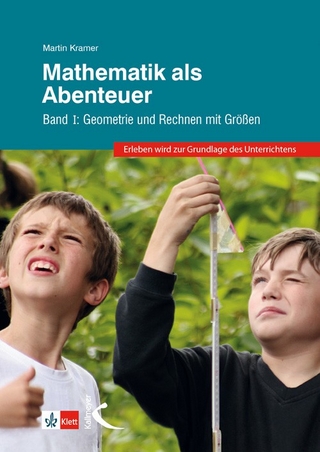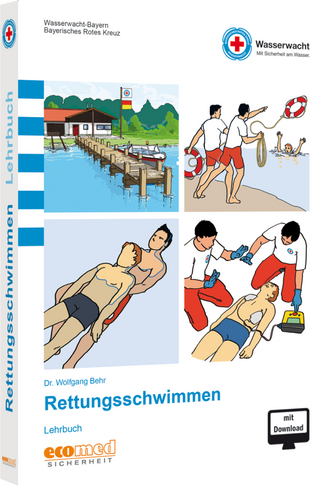
Laser Processing and Analysis of Materials
Kluwer Academic/Plenum Publishers (Verlag)
978-0-306-41067-3 (ISBN)
- Titel ist leider vergriffen;
keine Neuauflage - Artikel merken
The ability of laser sources to project a probing beam of light into remote or hostile environments has led to the development of a wide variety of new analytical techniques in environmental and laboratory analysis. Many of these are reviewed in this book.
1 Lasers and Laser Radiation.- 1.1. Introduction.- 1.2. Laser Sources.- 1.2.1. Ruby Laser.- 1.2.2. Nd-YAG Laser.- 1.2.3. Nd-Glass Laser.- 1.2.4. Tunable Infrared Diode Lasers.- 1.2.5. Helium-Neon Laser.- 1.2.6. Argon and Krypton Ion Lasers.- 1.2.7. Helium-Cadmium Laser.- 1.2.8. CO2 Laser.- 1.2.9. Rare Gas Halide Lasers.- 1.2.10. Dye Lasers.- 1.2.11. Stimulated Raman Scattering.- 1.3. Laser Radiation.- 1.3.1. Monochromaticity.- 1.3.2. Beam Shape.- 1.3.3. Beam Divergence.- 1.3.4. Brightness.- 1.3.5. Focusing of Laser Radiation.- 1.3.6. Coherence.- 1.4. Lens Aberrations.- 1.4.1. Spherical Aberration.- 1.4.2. Coma.- 1.4.3. Astigmatism.- 1.4.4. Field Curvature.- 1.4.5. Distortion.- 1.5. Window Materials.- 1.6. Mirrors and Polarizers.- 1.7. Q-Switching.- 1.7.1. Acousto-Optical Q-Switches.- 1.7.2. Electro-Optical Q-Switches.- 1.7.3. Passive Q-Switching.- 1.8. Frequency Conversion.- 1.9. Mode Locking.- 1.10. Detectors and Power Meters.- 1.10.1. Power Meters.- 1.10.2. Radiation Detectors.- 2. Materials Processing.- 2.1. Absorption of Laser Radiation by Metals.- 2.2. Absorption of Laser Radiation by Semiconductors and Insulators.- 2.3. Thermal Constants.- 2.4. Laser Drilling: Heat Transfer.- 2.4.1. Heating without Change of Phase.- 2.4.2. Heating with Change of Phase.- 2.4.3. Experimental.- 2.5. Welding.- 2.5.1. Heat Transfer-Penetration Welding.- 2.5.2. Heat Transfer-Conduction Welding.- 2.5.3. Welding with Multikilowatt Lasers.- 2.5.4. Welding with Low-Power Lasers.- 2.5.5. Laser Spot Welding.- 2.6. Cutting.- 2.6.1. Heat Transfer.- 2.6.2. Cutting Metals.- 2.6.3. Cutting Nonmetals.- 2.6.4. Scribing and Controlled Fracture.- 2.7. Micromachining.- 2.7.1. Resistor Trimming.- 2.7.2. Machining of Conductor Patterns.- 2.7.3. Fabrication of Gap Capacitors.- 2.7.4. Image Recording.- 2.7.5. Laser Marking.- 2.7.6. Micromachining-Thermal Considerations.- 2.8. Surface Hardening.- 2.9. Surface Melting, Alloying, and Cladding.- 2.10. Surface Cleaning.- 2.11. Crystal Growth.- 2.12. Optical Fiber Splicing.- 2.12.1. Optical Fiber-End Preparation.- 2.12.2. Optical Fiber-Drawing.- 2.13. Laser Deposition of Thin Films.- 2.13.1. Evaporation.- 2.13.2. Electroplating.- 2.13.3. Chemical Vapor Deposition.- 2.13.4. Photodeposition and Photoetching.- 3 Laser Processing of Semiconductors.- 3.1. Introduction.- 3.2. Annealing.- 3.3. Annealing-CW Lasers.- 3.4. Recrystallization.- 3.5. Silicide Formation.- 3.6. Ohmic Contacts and Junction Formation.- 3.7. Device Fabrication.- 3.8. Electrical Connections on Integrated Circuits.- 3.9. Monolithic Displays.- 4 Chemical Processing.- 4.1. Introduction.- 4.2. Schemes for Laser Isotope Separation.- 4.3. The Enrichment Factor.- 4.4. Laser-Induced Reaction.- 4.5. Single-Photon Predissociation.- 4.6. Two-Photon Dissociation.- 4.7. Photoisomerization.- 4.8. Two-Step Photoionization.- 4.9. Photodeflection.- 4.10. Multiphoton Dissociation.- 4.10.1. Deuterium.- 4.10.2. Boron.- 4.10.3. Carbon.- 4.10.4. Silicon.- 4.10.5. Sulfur.- 4.10.6. Chlorine.- 4.10.7. Molybdenum.- 4.10.8. Osmium.- 4.10.9. Uranium.- 4.11. Selective Raman Excitation.- 4.12. Economics of Laser Isotope Separation.- 4.13. Laser-Induced Reactions.- 4.13.1. Infrared Photochemistry-Basic Mechanisms.- 4.13.2. Vibrationally Enhanced Chemical Reactions.- 4.13.3. Vibrationally Induced Decomposition.- 4.14. Isomerization.- 4.15. Lasers in Catalysis.- 4.16. Laser-Induced Reactions: UV-VIS Excitation.- 4.17. Processing via Thermal Heating.- 4.18. Polymerization.- 5 Lasers in Chemical Analysis.- 5.1. Introduction.- 5.2. Absorption Spectroscopy.- 5.2.1. Absorption vs. Other Techniques.- 5.2.2. Intracavity Absorption.- 5.3. Laser-Induced Fluorescence.- 5.3.1. Laser-Induced Fluorescence: Theory.- 5.3.2. Laser-Excited Atomic Flame Fluorescence.- 5.3.3. Laser-Excited Molecular Flame Fluorescence.- 5.3.4. Beam Diagnostics.- 5.3.5. Fluorimetry and Phosphorimetry.- 5.3.6. Selective Excitation of Probe Ion Luminescence.- 5.4. Laser-Enhanced Ionization Spectroscopy.- 5.5. Multiphoton Ionization.- 5.6. Raman Spectroscopy.- 5.6.1. Theory and Physical Principles.- 5.6.2. Experimental Techniques.- 5.6.3. Experimental Results.- 5.6.4. Coherent Anti-Stokes Raman Spectroscopy.- 5.7. Laser Magnetic Resonance.- 5.8. Laser Photoacoustic Spectroscopy.- 5.8.1. LPS of Gases.- 5.8.2. LPS of Liquids and Solids.- 5.8.3. Photoacoustic Imaging.- 5.9. Laser Microprobe.- 5.10. Atomic Absorption Spectrometry.- 5.11. Laser Microprobe Mass Spectrometer.- 5.12. Laser Raman Microprobe.- 5.13. Lasers in Chromatography.- 6 Lasers in Environmental Analysis.- 6.1. Propagation of Laser Radiation through the Atmosphere.- 6.2. Laser Remote Sensing of the Atmosphere.- 6.2.1. Absorption Measurements.- 6.2.2. LIDAR.- 6.2.3. Laser Remote Sensing of Wind Velocity.- 6.2.4. Raman LIDAR.- 6.2.5. Differential Absorption LIDAR (DIAL).- 6.2.6. Resonance Fluorescence.- 6.2.7. Heterodyne Detection.- 6.3. Laser Sampling of Aerosols.- 6.3.1. Particle Size and Distribution.- 6.3.2. Particle Composition.- 6.3.3. Interaction of High-Power Laser Radiation with Aerosol Particles.- 6.4. Laser Remote Sensing of Water Quality.- References.- Materials Index.
| Zusatzinfo | 86 black & white illustrations, biography |
|---|---|
| Sprache | englisch |
| Themenwelt | Schulbuch / Wörterbuch |
| Technik | |
| ISBN-10 | 0-306-41067-2 / 0306410672 |
| ISBN-13 | 978-0-306-41067-3 / 9780306410673 |
| Zustand | Neuware |
| Haben Sie eine Frage zum Produkt? |
aus dem Bereich


